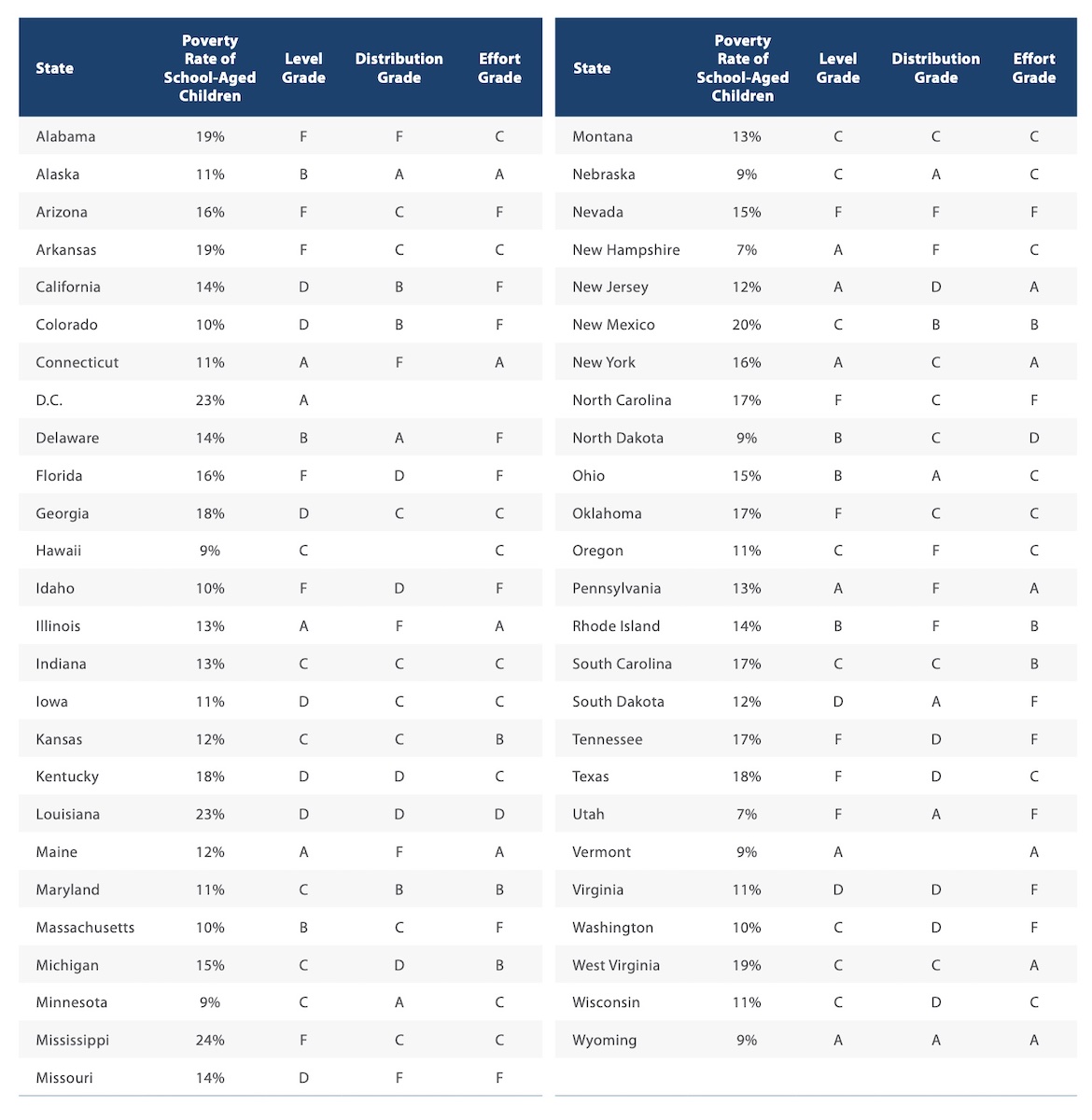A new school funding report card warns states will be stuck with “F’s” and other poor financial grades if they rely on ESSER relief to solve problems of unfairness.
Let’s look back for just a moment: The sudden shift to remote instruction in spring 2020 revealed that, due to persistent funding shortfalls exacerbated by going even farther back (to the Great Recession), schools that serve low-income communities were not prepared or equipped to “educate students during a public health crisis,” says Making the Grade 2022, the school funding report card released this week by the Education Law Center.
Fast forward to winter 2022, and the nonprofit equity organization is warning K-12 district leaders of severe financial storms ahead: “Most states are ill-prepared to maintain the necessary level of support once the federal relief funding runs dry,” its analysis asserts.
“The temporary balm provided by federal COVID relief funding does not erase the underlying, pre-pandemic disparities in school funding documented in this report,” said Education Law Center Executive Director David Sciarra, a co-author of the report. “The pandemic’s effect on schools and students is a long-term challenge that requires long-term solutions.”
One of the report’s key revelations for superintendents and their teams is how states have moved up—or down—the education funding-level rankings since the Great Recession struck in 2008. Illinois, Washington, and California have all climbed by double-digits, with Illinois improving from a D to an A grade, while Washington and California went from Fs to a C and D, respectively. Six states fell by 10 or more spots.
More from DA: How superintendents rate the effectiveness of their school board relationships
The Law Center also examined “funding distribution,” which measures the amount of money school districts receive relative to the concentration of students from low-income families. Nineteen states, for example, have “progressive” distribution systems that give additional funding to districts with high student poverty levels. But in 17 states, “regressive” systems leave high-poverty districts with less funding than low-poverty districts, the report found.
New York, North Dakota, and North Carolina’s funding systems have evolved from regressive to progressive over the last decade while five states—Nevada, Connecticut, Oregon, Rhode Island and Kentucky—slipped in the other direction.
Finally, the report’s “funding effort” category measures investments in K-12 as a percentage of each state’s economic productivity and GDP. Above-average funding levels in New Jersey, Vermont, and Wyoming qualify those states as “high-effort.” Arizona, Florida, and North Carolina ranked as low-effort because, despite having the financial wherewithal, education funding in those states remains below average, the report found.
Ultimately, the report finds that $752 billion in state and local education funds have been lost since 2008 in states where policymakers did not bring education spending back above pre-Great Recession levels before the pandemic struck.
“For the millions of students whose education was disrupted by the pandemic, going back to ‘normal’ funding levels could be devastating,” said Education Law Center Research Director and report co-author Danielle Farrie. “It’s incumbent upon states to avoid a repeat of the Great Recession by increasing and equitably distributing their own investments in education.”










